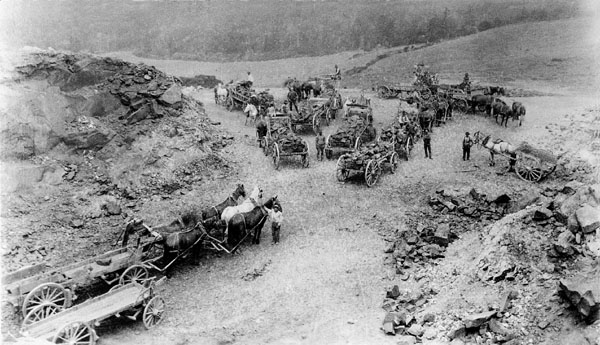Bituminous rock
What was commonly known as bituminous rock is sandstone impregnated with petroleum. It can be found in many places of coastal California, including the coastal terraces north of Santa Cruz. The thick petroleum (also called "asphaltum" and/or "bitumen") leaks out of the stone in some places, and that "tar" was known and used by indigenous Californians for waterproofing baskets, boats, and dwellings. Spanish colonizers continued those uses. Later in the 19th century, methods were devised for using the petroleum-bearing sandstone as a natural form of today's asphalt paving. Beginning in the 1880s, the material began to be used to pave Santa Cruz sidewalks, and later streets. By the mid-1890s, bituminous rock became the most valuable Santa Cruz mining export. That status lasted until after 1907, when the Davenport cement plant made concrete a more-plentiful and less expensive paving material.
Several north coast landowners were involved in bituminous rock mining, including Isaac L. Thurber, A. Walrath, L. K. Baldwin, and Henry Cowell. The ~1890 photo at right shows bituminous-rock mining on Cowell property.
- History Pages: 43 - Petroleum in Santa Cruz, Then and Now
- Santa Cruz County, Calif. Illustrations (1997 edition), p50 (Baldwin contributed a report on the north coast dairies)
- "Mineral Survey of Santa Cruz County" [part of the Santa Cruz Chamber of Commerce Annual Report for 1926], SCPL Local History Articles.
